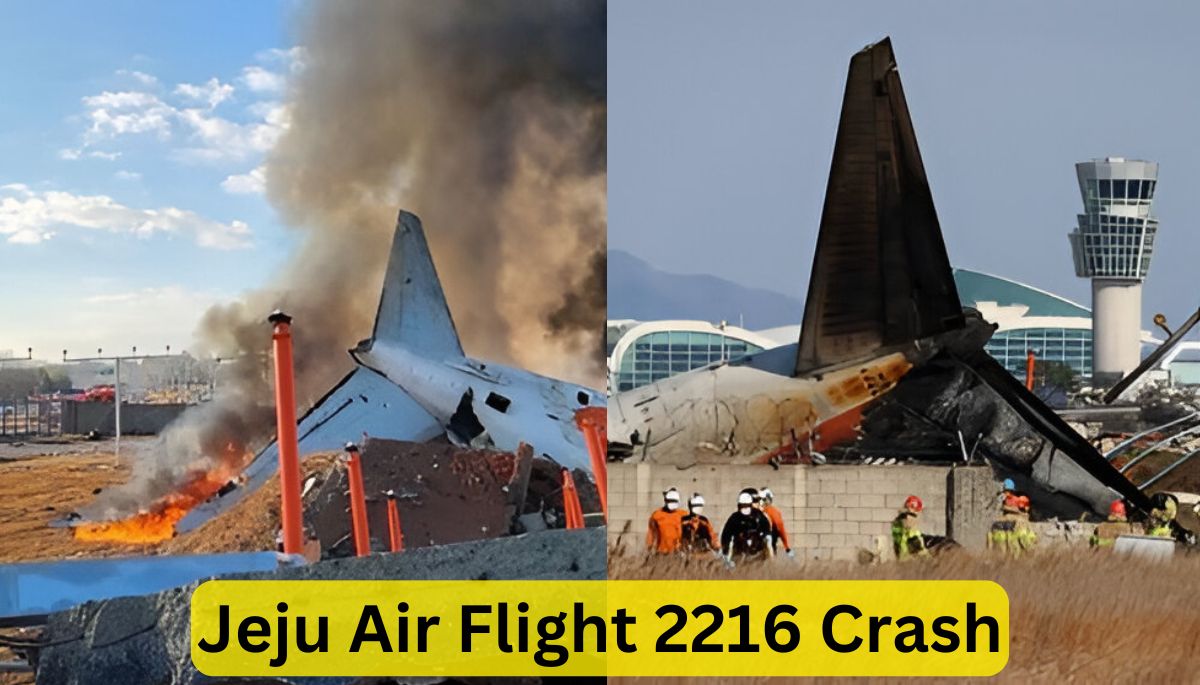Jeju Air Flight 2216 Crash: A Detailed Account
Key Takeaways:
- Incident Overview: A Jeju Air Boeing 737-800, operating Flight 2216 from Bangkok to Muan, South Korea, crashed during landing at Muan International Airport on December 29, 2024.
- Casualties: At least 120 fatalities have been confirmed, with only two survivors rescued from the wreckage.
- Cause: Preliminary reports suggest a landing gear malfunction, possibly due to a bird strike combined with adverse weather conditions.
Jeju Air Flight 2216 Crash: A Detailed Account
Incident Overview
On December 29, 2024, Jeju Air Flight 2216, a Boeing 737-800, was en route from Bangkok’s Suvarnabhumi Airport to Muan International Airport in South Korea. The aircraft, carrying 181 individuals—175 passengers and six crew members—attempted to land at approximately 9:03 a.m. local time. Tragically, the plane skidded off the runway, collided with a concrete barrier, and erupted into flames.
Casualties and Rescue Efforts
The crash resulted in a significant loss of life, with at least 120 fatalities confirmed. Rescue teams managed to extract two survivors, both flight attendants, who were located near the aircraft’s tail section. They have been transported to local hospitals for treatment. The remaining passengers are presumed deceased, making this incident one of South Korea’s deadliest aviation disasters.
Preliminary Investigations
Initial findings indicate that the aircraft’s front landing gear failed to deploy properly, leading to a belly landing. This malfunction caused the plane to veer off the runway and collide with a concrete fence. Authorities are exploring the possibility that a bird strike, coupled with adverse weather conditions, contributed to the mechanical failure. The exact cause remains under investigation, with the flight data recorder recovered for detailed analysis.
Aircraft and Operator Background
The aircraft involved was a 15-year-old Boeing 737-800, a model known for its reliability and widespread use in commercial aviation. Jeju Air, a prominent South Korean low-cost carrier, has maintained a commendable safety record since its inception. This incident marks the first fatal accident in the airline’s history, prompting a comprehensive review of its operational protocols.
Government and Airline Response
In the wake of the tragedy, Jeju Air’s CEO, Kim E-bae, issued a public apology, expressing profound condolences to the victims’ families and pledging full cooperation with investigative authorities. South Korea’s acting president, Choi Sang-mok, has ordered an exhaustive investigation to determine the exact cause of the crash and to implement measures preventing future occurrences.
Historical Context
This disaster is among the most catastrophic in South Korea’s aviation history, recalling previous tragedies such as the Korean Air Flight 801 crash in 1997, which resulted in 228 fatalities. The recent incident underscores the imperative for ongoing vigilance in aviation safety protocols and the continuous enhancement of emergency response strategies.
Conclusion
As investigations proceed, the global aviation community awaits comprehensive insights into the factors leading to this calamity. The focus remains on supporting the bereaved families, ensuring the recovery of the survivors, and reinforcing safety measures to avert similar tragedies in the future.




